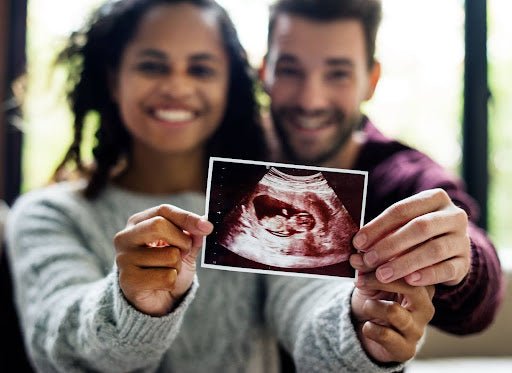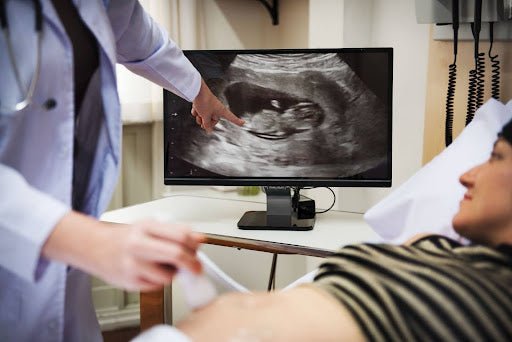Anticipating the sex of a baby can be one of the most exciting moments of pregnancy. From casual guesses at a baby shower to advanced genetic testing, gender prediction has intrigued expectant parents across cultures and centuries.
While old wives' tales and cultural beliefs still hold charm, scientific advancements like ultrasound examination, blood tests, and prenatal testing have made it easier to discover the baby's sex with accuracy. This article dives deep into traditional and modern methods, examining everything from the Chinese gender predictor chart to the latest in maternal-fetal medicine.
How is Gender Determined?
The sex of a baby is determined at conception by the combination of sperm cells carrying either an X or a Y chromosome and the egg, which always contributes an X chromosome. If the sperm cell carries an X chromosome, the baby will be genetically female (XX); if it carries a Y chromosome, the baby will be male (XY). However, predicting this early on without genetic testing is challenging.
Find out the sex of your baby as early as 7 weeks
Are Pregnancy Symptoms Different if You are Having a Boy Vs a Girl?
Most healthcare professionals agree that the only reliable way to know your baby’s gender is through ultrasounds or medical tests. While most studies find no significant differences in pregnancy symptoms between carrying a boy or a girl, some research has shown correlations between certain symptoms and the probability of fetal gender. However, these findings are not conclusive, and pregnancy symptoms alone are not a dependable method for predicting your baby’s sex.
5 Signs You're Having a Girl
Certain pregnancy symptoms and changes in pregnancy hormones may offer early clues about the baby’s sex. While not definitive, some signs are more commonly reported by those expecting girls. From how you feel to noticeable body changes, here are key signs that could indicate you’re having a baby girl:
1. Craving Sweet Foods
Many expectant mothers report craving sweets when pregnant with a girl. A study published by Fessler et al. (2005) found that food cravings may vary by fetal sex, with sweet cravings significantly more common among those carrying female fetuses. This could be linked to hormonal fluctuations that subtly influence taste preferences during pregnancy.
2. Increased Morning Sickness
Research suggests women carrying girls may experience more severe morning sickness. A 2001 study by Young and Mehr found that pregnancies involving female fetuses were associated with significantly more nausea and vomiting. This is believed to be caused by higher levels of hCG (human chorionic gonadotropin), which tends to be elevated in female pregnancies.
3. Faster Baby Heart Rate
The myth that girls have faster heart rates may have scientific merit. According to a study published in Pediatric Research, fetal heart rates above 140 beats per minute were more often observed in female fetuses. While not definitive, this pattern suggests a correlation between faster heart rates and female babies in early gestation.
4. Increased Acne
Hormonal changes during pregnancy can lead to breakouts. A study in the International Journal of Dermatology found that women carrying girls reported higher incidences of acne. This may be due to elevated estrogen levels, which fluctuate more during female pregnancies, potentially triggering more frequent skin issues.
5. Forgetfulness and “Pregnancy Brain”
Cognitive changes, often dubbed “pregnancy brain,” may be more pronounced when carrying a girl. Some evidence suggests that women pregnant with females report more memory lapses and mental fog. Though research is ongoing, this may relate to differing hormonal patterns between male and female pregnancies affecting neurological functioning.
Global baby name trends: The most popular girl names for 2025 revealed
5 Signs You're Having a Boy
Some believe that specific cravings and physical changes during pregnancy can hint at the baby's sex. Craving salty snacks and other subtle signs may act as a natural gender predictor. While not guaranteed, these common experiences are often linked to carrying a boy. Here are key signs you might be having a boy:
1. Increased Energy Intake
Carrying a boy may increase your appetite. A study by Tamimi et al. (2003) found that women pregnant with boys consumed about 10% more calories daily. This may be due to greater energy demands from male fetuses, who tend to grow faster and require more nutrients in utero.
2. Bigger Baby Bump
The size and shape of a baby bump might offer gender clues. A study in the American Journal of Human Biology found that male pregnancies are associated with greater fetal size, which can lead to visibly larger or differently shaped bellies. This occurs due to faster growth rates in male fetuses.
3. Disgust Toward Favorite Foods
Aversion to previously loved foods may indicate a boy. Research published in Physiology & Behavior found that fetal sex influences maternal disgust sensitivity. Women carrying boys often reported stronger aversions to formerly enjoyed foods, possibly due to hormone-mediated immune system shifts affecting sensory processing.
4. Increased Risk of Gestational Diabetes
Gestational diabetes is more common among women carrying boys. A study in Diabetologia observed that male fetuses are associated with higher maternal blood glucose levels. The authors suggest that male placentas may affect how the mother’s body regulates insulin, increasing the likelihood of developing gestational diabetes.
5. Less Nausea and Morning Sickness
Though not universally experienced, milder morning sickness is often linked to boy pregnancies. The same 2001 study by Young and Mehr found that women carrying boys generally reported fewer or less severe nausea symptoms during the first trimester, likely due to lower hCG levels in male pregnancies.
Unique baby boy names and popular trends for 2025
Additional Baby Gender Superstitions
Many cultures have developed unique superstitions and traditional methods to predict a baby’s gender. These additional gender prediction superstitions offer fun, creative ways for expectant parents to guess the baby’s sex, blending folklore, cultural beliefs, and old wives’ tales.
- Chinese Gender Prediction Calendar: Uses the mother’s lunar age and month of conception to forecast the baby’s sex based on traditional Chinese astrology.
- Nipple Color: Changes in nipple pigmentation during pregnancy are believed by some to hint at the baby’s gender.
- Pee Color: Bright yellow or clear urine is thought to suggest a boy, while dull or cloudy urine points to a girl.
- Ring Test: A ring on a string swung over the belly predicts gender by its motion, back and forth for a boy, circular for a girl. This is often a fun game played at baby showers when the gender isn't yet known.
- Skull Theory: Differences in the fetal skull shape observed in ultrasound are used to predict gender based on skull contours.
Pregnancy gender prediction tests: Are they accurate?
Medical Methods for Gender Prediction
Medical methods for gender prediction provide accurate information during pregnancy. Techniques like the anatomy scan offer detailed views of the fetus, while advanced tests screen for genetic disorders alongside fetal gender. These medical approaches combine safety and precision, giving expectant parents reliable insights into their baby’s development and sex.
At-Home DNA Gender Tests
For those eager to learn the baby's sex sooner, at-home DNA gender tests are now widely available. These kits, like EarlyReveal's at-home kit, work by detecting cell-free fetal DNA in a maternal blood sample, typically as early as 7 weeks. Though not as comprehensive as NIPT, they provide a convenient, accurate, and noninvasive gender predictor option from the comfort of home.
Noninvasive Prenatal Testing (NIPT)
Introduced in recent years, Noninvasive Prenatal Testing (NIPT) analyzes cell-free fetal DNA found in the mother’s blood. Available as early as 10 weeks, NIPT not only predicts fetal gender with high accuracy but also screens for chromosomal abnormalities like Down syndrome.
Ultrasound Examination
The most common method of predicting fetal gender is the second trimester ultrasound, often referred to as the anatomy scan ultrasound. Typically performed between 18 and 22 weeks, this exam checks fetal development and can reveal the baby's sex, assuming the genital nub is visible.
Chorionic Villus Sampling (CVS) and Amniocentesis
Both Chorionic villus sampling and amniotic fluid analysis are diagnostic procedures used to detect genetic abnormalities. These procedures are typically reserved for high-risk pregnancies and are more invasive but can definitively determine genetic information, including fetal gender.
Discover your baby’s gender with an at-home test
Find Out Your Baby’s Gender with 99% Accuracy
At EarlyReveal, we offer a pioneering at-home gender reveal test that allows expectant parents to determine their baby's sex as early as 7 weeks into pregnancy. Utilizing a painless, needle-free blood collection method, our test boasts over 99% accuracy.
The process is straightforward: order the kit online, collect the sample at home, and send it back using the provided prepaid shipping. Results are delivered securely, maintaining strict privacy standards.
With a money-back guarantee for incorrect results, we offer a confident and convenient way to discover your baby's gender early in the pregnancy journey. You can also find out your baby’s gender in a clinic near you in Canada if you prefer.



